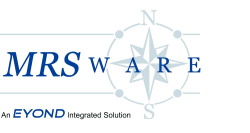MRSweb Contacts, on the Menu bar, contains the companies and individuals with whom you interact. This is the heart of the CRM system. Virtually all information is associated with and linked to Companies and Individuals. Contacts contains information on businesses, organizations, and the individuals that work for these businesses and organizations, as well as anyone with whom you have a business relationship.
Relationship Management is a critical component of successful companies. Managers use a Relationship Database as a foundation to track, measure and analyze the business. With a great database, you will increase collaboration, enhance customer service and improve productivity. The better the database, the better your customer service, your communications, and your chance of closing deals.
Companies and Individuals are the basis for your Relationship Database.
Like a garden, the better you are at preparing the soil, sowing seeds, and weeding and fertilizing, the better the crop you’ll reap.
When you establish a master database of Companies and Individuals, you are preparing the soil.
Setting up standard information requirements to include in your database is sowing the seeds.
By making sure the data in the system is up-to-date and correct, you are weeding.
Asking your team for ideas and suggestions on important information to include is where you fertilize and grow your plants.
As you continue to cultivate the information found in your Companies and Individuals, you will reap a first-class crop, in other words, a great Relationship Database.
The Contacts menu also includes Customers, Accounts, and Sales Reps.
- Customers displays companies that purchase products from your Principals. The Customer view displays the total sales dollars purchased, for all lines.
- Accounts displays companies that purchase products from your Principals. The Accounts view displays the total sales dollars purchased, for each Principal individually.
- Sales Reps displays the Active sales reps for the agency. You can also look at the Inactive sales reps, which are the reps that no longer work for the agency.
Relationship Management is a critical component of successful companies. Managers use a Relationship Database as a foundation to track, measure and analyze the business. With a great database, you will increase collaboration, enhance customer service and improve productivity. The better the database, the better your customer service, your communications, and your chance of closing deals.
Companies and Individuals are the basis for your Relationship Database.
Like a garden, the better you are at preparing the soil, sowing seeds, and weeding and fertilizing, the better the crop you’ll reap.
When you establish a master database of Companies and Individuals, you are preparing the soil.
Setting up standard information requirements to include in your database is sowing the seeds.
By making sure the data in the system is up-to-date and correct, you are weeding.
Asking your team for ideas and suggestions on important information to include is where you fertilize and grow your plants.
As you continue to cultivate the information found in your Companies and Individuals, you will reap a first-class crop, in other words, a great Relationship Database.
The Contacts menu also includes Customers, Accounts, and Sales Reps.
- Customers displays companies that purchase products from your Principals. The Customer view displays the total sales dollars purchased, for all lines.
- Accounts displays companies that purchase products from your Principals. The Accounts view displays the total sales dollars purchased, for each Principal individually.
- Sales Reps displays the Active sales reps for the agency. You can also look at the Inactive sales reps, which are the reps that no longer work for the agency.

 RSS Feed
RSS Feed